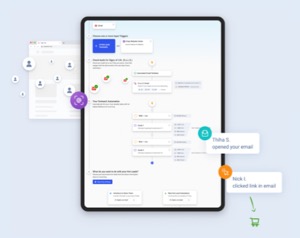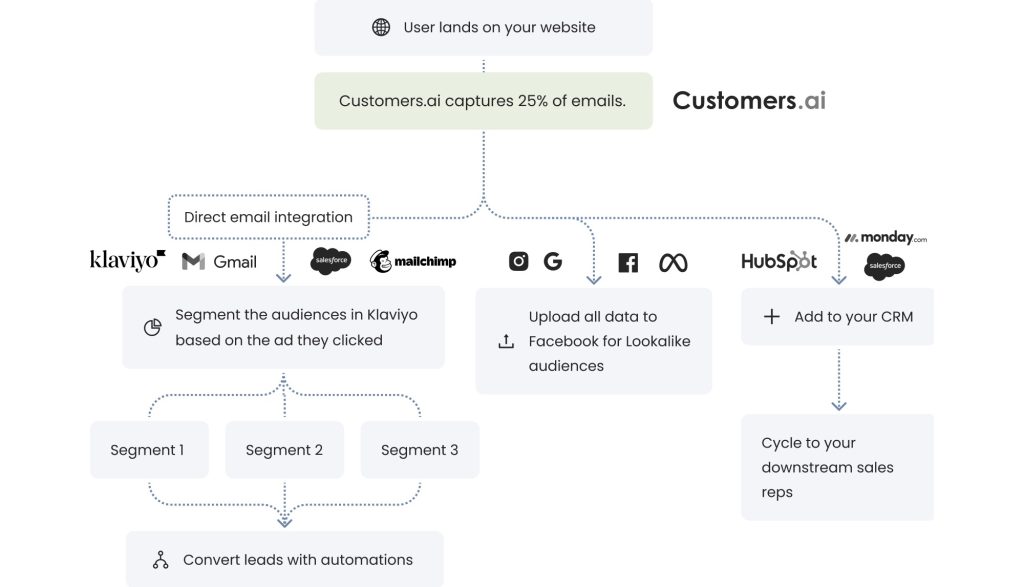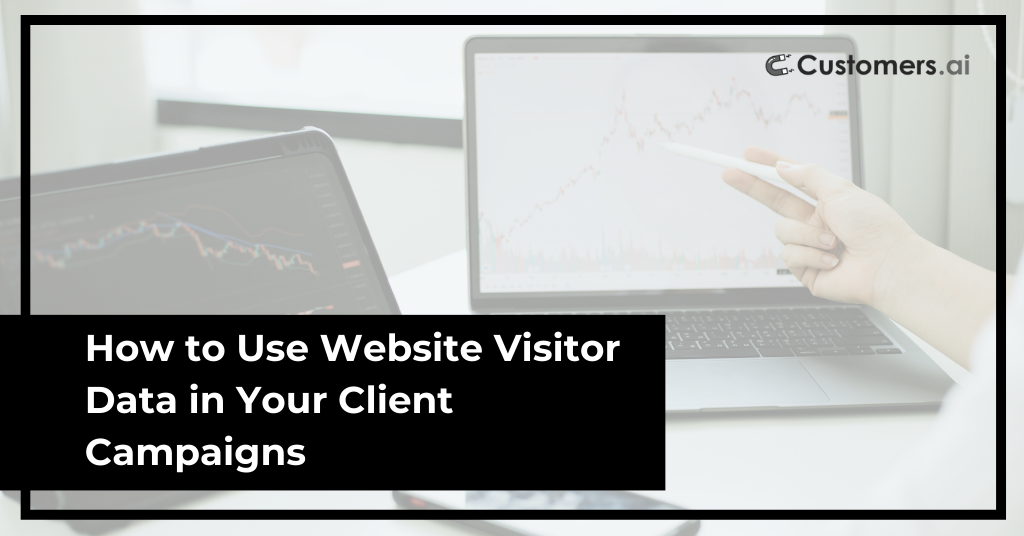As we rapidly wave goodbye to third-party cookies and attribution data, marketing and advertising agencies find themselves in a rush to pivot and adapt.
After all, agencies are tasked with one thing – driving results – and with less data to work with and without the ability to truly understand the impact of campaigns, driving results becomes much harder.
The good news is, there’s no need for panic. While this shift may feel monumental (and let’s be honest, it is), it does present marketers a chance to revolutionize their approach to client campaigns across the board—from email and digital ads to social media and direct mail.
The key?
Your website visitor data.
Whether it’s the rich potential of first-party data or your website analytics data, there is still plenty we can do to ensure campaigns are successful and clients are happy.
Understanding Website Visitor Data
At the core of any successful marketing strategy is a deep understanding of our audience.
Unfortunately, many of the privacy changes made by the tech platforms have taken away much of our audience data (looking at you GA4).
That doesn’t mean we don’t have data to work with though. In fact, it means we need take a look at the data we do have to understand how we can paint a complete picture of our website visitors.
Let’s look at three types of website data:
- First-Party Data. First-party data includes information directly collected from your audience, such as names, email addresses, preferences, and behaviors on your website. This data is gold in the marketing world, allowing for unparalleled personalization and targeting.
- Website Analytics. Analytics data can help shed light on broader patterns, such as which pages are most visited, the average time spent on the site, and the journey users take through your content. Analytics data helps identify what captures interest and drives action.
- CRM Data. While technically ‘first-party data’, CRM data can provide a historical view of customer interactions, purchases, and feedback, enabling a 360-degree view of the customer journey. For that, it’s worth calling out on it’s own.
How to Capture First-Party Data
While we could create a whole blog post around this (see here, here, and here), we think it’s important to emphasize in this post as first-party data is the truly a life saver when it comes to overcoming the loss of third-party cookies (even Google agrees).
So we aren’t going to go into every method of collecting first-party data but we do want to look at a few.
Website Visitor Identification
We are obviously partial to this as it’s the core of our product but it’s also a game-changer for marketers when it comes to collecting data.
With a website visitor identification tool, you can collect the names, email addresses, and phone numbers of your potential customers without them ever having to fill out a form.
And with a solution like Customers.ai that enriches the contact data, you can get information on demographics, business insights (company, revenue, LinkedIn profile), and more, giving you a huge amount of details on your website visitors.
Interested in trying a website visitor identification tool for yourself?
We have a free trial and you can be up and running in 90 seconds.

See Who Is On Your Site Right Now!
Get names, emails, phone numbers & more.
Try it Free, No Credit Card Required
Exit Intent or Promo Popups
Positioned to activate when visitors indicate they’re about to depart, exit-intent pop-ups serve as a prime chance to gather first-party data.
By providing special offers, attractive discounts, or compelling content, popups encourage users to divulge their personal information, giving you real-time data on your website visitors.
Lead Magnets or Newsletters
We’ve all seen them – the reports we had to fill out our personal information to download, the pages we had to add our email addresses to in order to read the full page, the newsletter we had to give our firstborn to to receive.
But look, they work!
Your visitors get something they want and in return, you get first-party data.
At the end of the day, there are any number of creative ways and methodologies to capturing first-party data. The key is making it as easy and as seamless as possible for your visitors.
How to Use Website Visitor Data in Your Client Campaigns
All right. We know what type of data we are looking for and we know how to capture the data. Let’s look at a few ways we can use our website visitor data in client campaigns.
Leverage First-Party Data for Personalization
Personalization is key to connecting with your audience. It’s also what they want!
Customers want personalization in their emails, they want targeted ads, they want product recommendations that make sense for them, and they want businesses to speak to them in a way that resonates and doesn’t waste their time,
First-party data is how we do this!
Let’s look at an example of just how this can be implemented.
A woman visits a fitness website and browses several articles on running but doesn’t make a purchase.
Using a website visitor identification solution like Customers.ai, we can identify who the user is (name, email, etc.) and what pages she visited.
With our first-party data in hand, we can then add her to our retargeting audience and build a campaign around those who have visited articles about running but have not purchased.
Now what if she instead visited the running shoes page, added the shoes to the cart, but then abandoned before giving us her info?
Well, given we have her name and email and we know what shoes she looked at before visiting the cart page, we can send a highly personalized email reminding her about the shoes she left behind.
That is the power of first-party data.
Identify Messaging Effectiveness with Analytics Data
While platforms like Google and Facebook have taken away much of the analytics data we used to have access to, they are still helpful when it comes to understanding the effectiveness of content and campaigns.

By examining patterns, such as which blog posts drive the most engagement or what path users typically follow before purchasing, agencies can tailor their strategies to match user behavior and understand which messaging resonates best with each client’s audience.
Let’s look at another example using the same fitness site as above.
Using analytics, the agency sees that a high percentage of visitors who come to the site through a blog post about minimalist running shoes, make a purchase.
They also can see that the minimalist running shoe category page has a much lower conversion rate.
By comparing the messaging on the blog to the messaging on the category page, they can see that the pages are not cohesive. The category page uses less descriptive language and does not showcase the value of the shoes the way the blog does.
The agency is able to make a recommendation on how to update the category page and improve the overall conversion rate.
Understanding what resonates with customers is tricky, especially from an agency perspective where you don’t necessarily have access to customer support or the CRM.
By using analytics, we can better understand what’s working and what’s not.
Segment Audiences for Targeted Campaigns
Effective segmentation is crucial for delivering relevant content. For example, segmenting users based on their engagement level—such as new visitors, frequent browsers, and past purchasers—allows for campaigns that speak directly to where they are in the customer journey.

This is also where we can integrate our CRM data.
Let’s look at another example, this time using a B2B software company.
A B2B software provider uses CRM data to segment its audience based on industry, job role, and previous engagement with the website.
For high-intent visitors, they create tailored email campaigns for each segment, offering relevant whitepapers and case studies, which leads to a higher open rate and more qualified leads.
For visitors at the top of the funnel, they create custom audience segments that can be used in their LinkedIn campaigns.
The more segmented you can get, the better.
As an agency, getting access to CRM data is always challenging but when positioned the right way and with case studies in hand, you can show your clients exactly how effective that data can be.
Making Visitor Data Work for Your Clients
The importance of website visitor data in crafting targeted, personalized marketing campaigns cannot be overstated.
By effectively leveraging first-party data, analytics, and CRM insights, marketing agencies can significantly enhance their client campaigns, driving better results and building stronger customer relationships.
Look, while none of this is really all that groundbreaking, it is a new way of thinking about how we use the data we have and agencies that adapt now are going to be in a better place and ultimately have happier clients.
Remember, the key to success is adaptability, personalization, and a relentless focus on the data that matters most – the insights directly from your audience.
Important Next Steps
- See what targeted outbound marketing is all about. Capture and engage your first 500 website visitor leads with Customers.ai X-Ray website visitor identification for free.
- Talk and learn about sales outreach automation with other growth enthusiasts. Join Customers.ai Island, our Facebook group of 40K marketers and entrepreneurs who are ready to support you.
- Advance your marketing performance with Sales Outreach School, a free tutorial and training area for sales pros and marketers.
